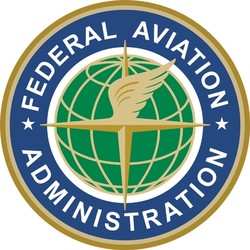Wed, Jul 06, 2011
Goal Is To Better Define Role Of Non-Primary Airports In Their
Communities
The FAA is in the midst of a top-down look at the current
general aviation airport system in the U.S. to better describe and
explain the many roles and functions these airports serve in their
respective communities. The review, which began last fall, is
focusing on infrastructure needs, based on the roles and functions
of the airports.

In recent years, the FAA has conducted two studies to look at
capacity and development needs at commercial service airports, and
now the agency is turning its attention to general aviation
airports. There are 2,950 nonprimary airports included in the
National Plan of Integrated Airport Systems (NPIAS), including
nonprimary commercial service, reliever and general aviation
airports. This is in contrast to the four distinct categories for
the nation’s 368 primary airports.
Defining these airports simply as “nonprimary” does
not adequately describe the many diverse roles these airports play
in their communities. General aviation airports provide a variety
of functions, ranging from access for emergency medical services,
disaster relief, aerial firefighting, law enforcement and border
control to agricultural functions, flight training, charter
passenger and time-sensitive air cargo services, among others.
The FAA is working closely with aviation industry stakeholders
including associations, state aeronautical agencies, airport
directors, airport authorities, airport planners, local councils of
governments, and aviation user groups to classify general aviation
airports based on the roles they support. These stakeholders agree
that more descriptive categories are needed in order to help the
general public understand the importance of these airports and
their capital investment needs.
With input from aviation industry stakeholders, the FAA will
develop a list of classifications for general aviation airports and
publish a report by January 2012.
The report will:
- Propose updated federal airport classifications for general
aviation airports that reflect the airports’ roles in their
community, region and national system.
- Provide examples to illustrate the value of each airport
category.
- Provide a framework for a strategic vision for the national
system.
More News
“While legendary World War II aircraft such as the Corsair and P-51 Mustang still were widely flown at the start of the Korean War in 1950, a new age of jets rapidly came to >[...]
Decision Altitude (DA) A specified altitude (mean sea level (MSL)) on an instrument approach procedure (ILS, GLS, vertically guided RNAV) at which the pilot must decide whether to >[...]
Aero Linx: National Aviation Safety Foundation (NASF) The National Aviation Safety Foundation is a support group whose objective is to enhance aviation safety through educational p>[...]
Also: Cal Poly Aviation Club, $$un Country, Arkansas Aviation Academy, Teamsters Local 2118 In response to two recent general aviation accidents that made national headlines, more >[...]
“The FAA is tasked with ensuring our skies are safe, and they do a great job at it, but there is something about the system that is holding up the medical process. Obviously,>[...]
 Aero-News: Quote of the Day (04.28.25)
Aero-News: Quote of the Day (04.28.25) ANN's Daily Aero-Term (04.28.25): Decision Altitude (DA)
ANN's Daily Aero-Term (04.28.25): Decision Altitude (DA) ANN's Daily Aero-Linx (04.28.25)
ANN's Daily Aero-Linx (04.28.25) Airborne-Flight Training 04.24.25: GA Refocused, Seminole/Epic, WestJet v TFWP
Airborne-Flight Training 04.24.25: GA Refocused, Seminole/Epic, WestJet v TFWP Aero-News: Quote of the Day (04.29.25)
Aero-News: Quote of the Day (04.29.25)



